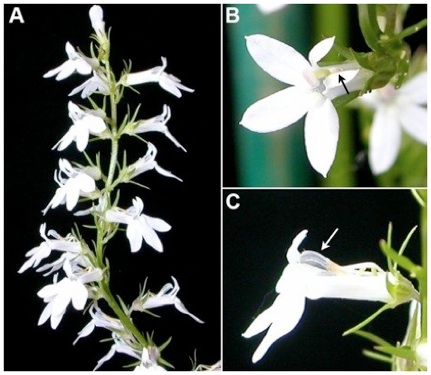An inflorescence of Lobelia spicata (A).
Flowers on female plants (B) have reduced, white anther tubes (indicated by the black arrow) that lack pollen, whereas flowers on hermaphroditic plants (C) have well-developed, blue anther tubes (indicated with white arrow) that contain pollen.
In (B), the stigma is visible, but in (C) it has not yet protruded through the anther tube, and this flower is in male phase.
(left) John Stanton-Geddes ’04 with Lobelia spicata in Amherst, MA.


